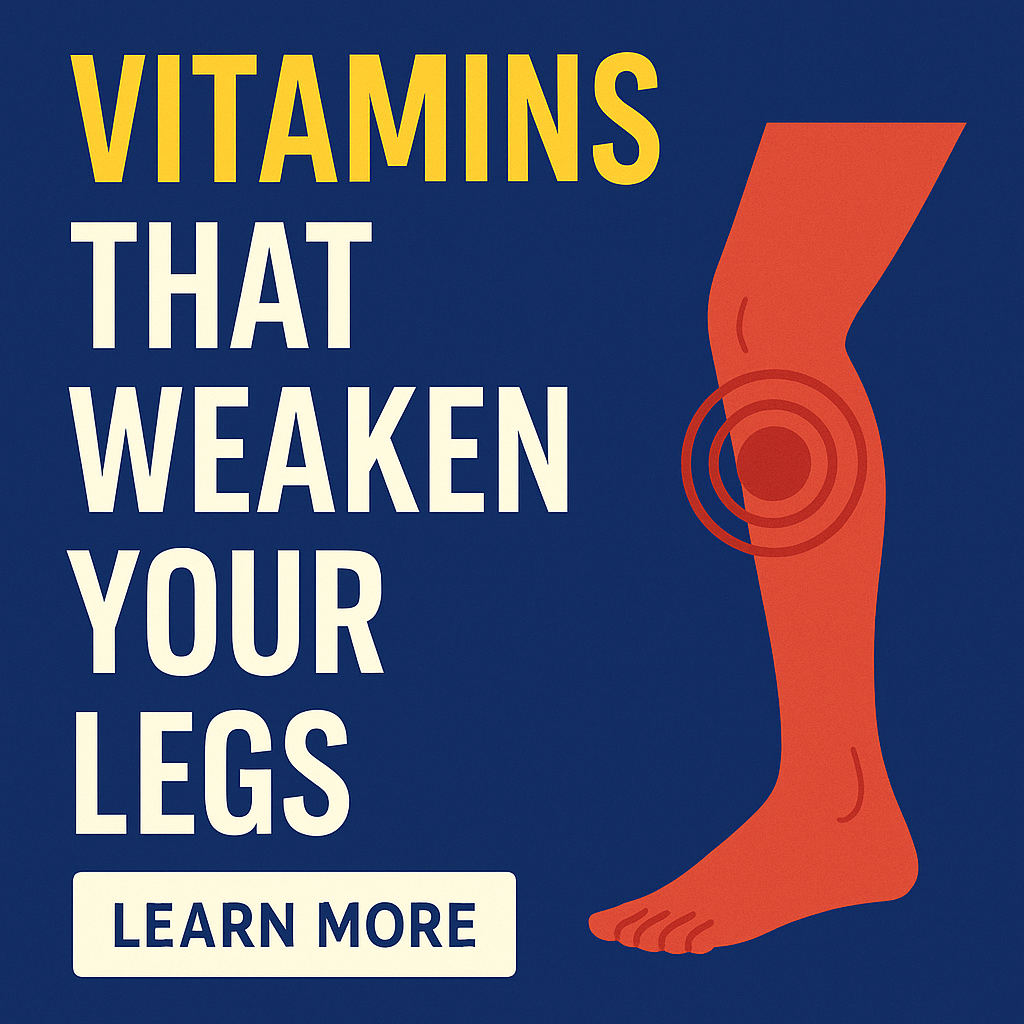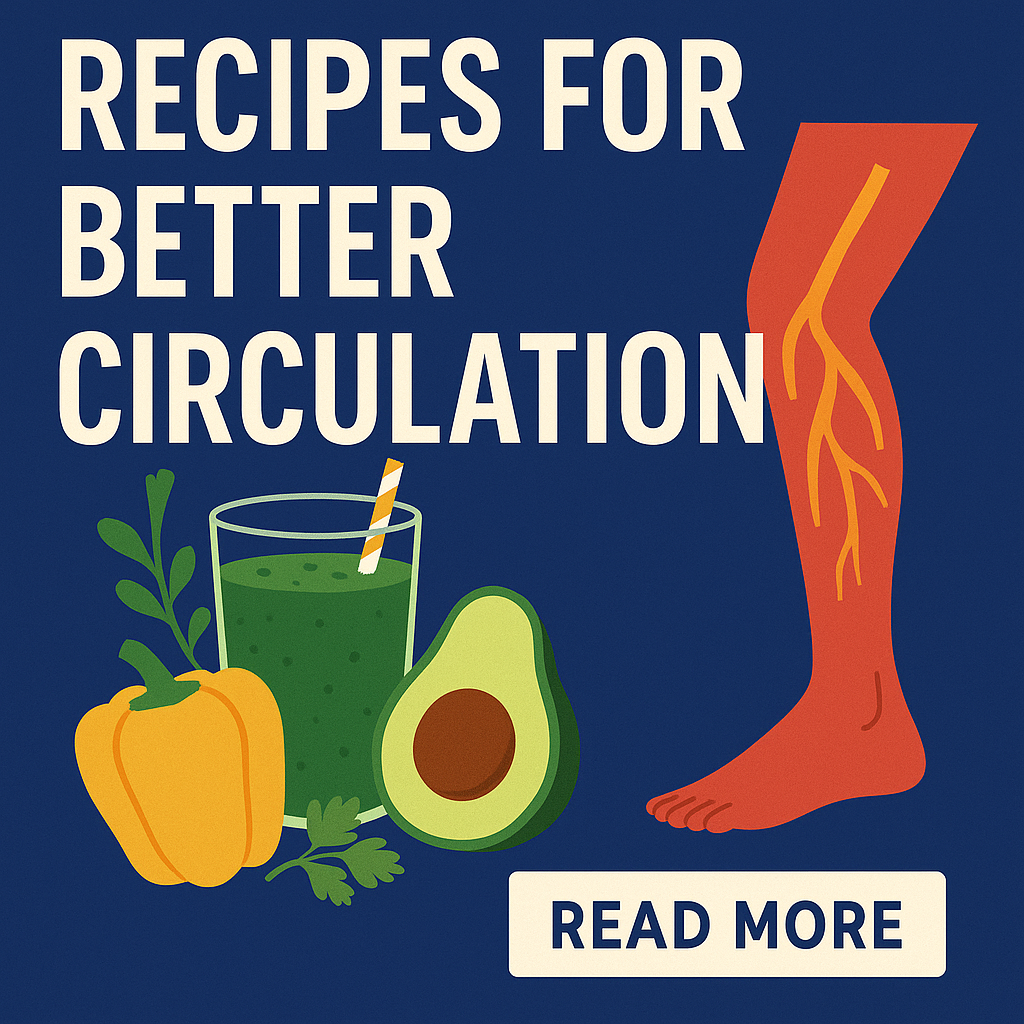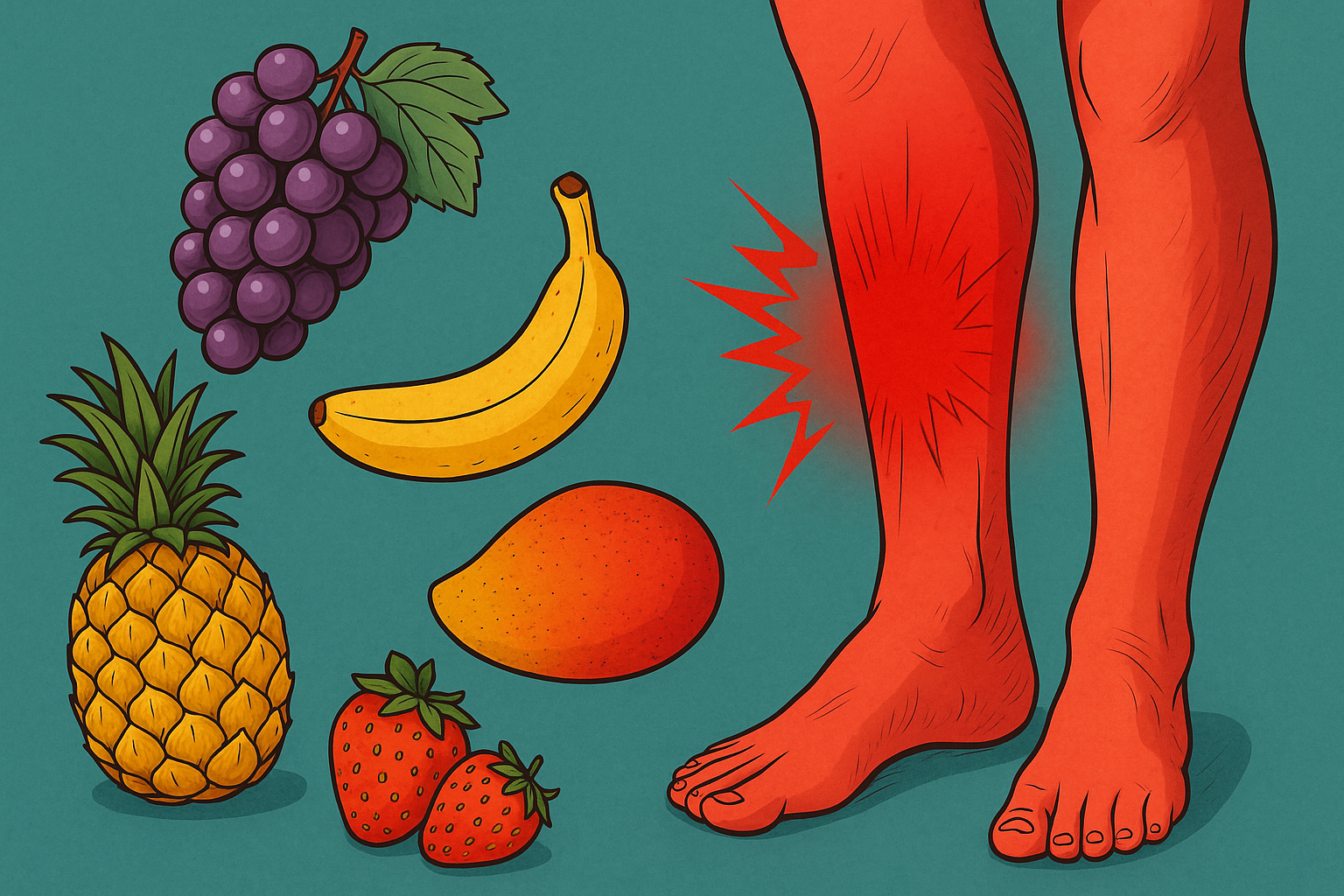Fruits That Cause Inflammation in the Legs: What You Need to Know
The Connection Between Diet and Leg Health
Diet has a direct impact on vascular and muscular health in the legs. From inflammation control to blood flow regulation, what you eat daily can improve—or harm—your leg health.
Fruits that cause inflammation in the legs aren’t inherently bad, but when consumed in excess or by individuals with specific health conditions, they can worsen issues such as swelling, varicose veins, and muscle pain.
Certain components in some fruits, like excessive fructose or compounds with pro-inflammatory effects, can trigger negative reactions. These effects are more noticeable in people predisposed to circulatory issues or fluid retention.
How Certain Fruits Affect Circulation and Inflammation
Consuming large amounts of fruits high in natural sugars (fructose) may promote systemic inflammation. Even though they are natural, overconsumption can increase uric acid production, stress the liver, and disrupt metabolic balance, all of which can affect the legs.
- Increased fluid retention
- Impaired blood circulation
- Triggered inflammatory responses
- Worsened muscle aches and cramps
The issue isn’t fruit itself but which fruits, how much is consumed, and the individual’s health status.
7 Fruits That May Be Harming Your Legs
1. Banana
While high in potassium, excessive banana intake may cause fluid retention, especially in people with kidney dysfunctions or electrolyte imbalances—contributing to leg swelling.
2. Grapes
Grapes are high in fructose, which may elevate uric acid levels and exacerbate joint and muscle inflammation, including in the legs.
3. Mango
This very sweet fruit can trigger inflammation in people with insulin resistance. Its high glycemic index may negatively affect vascular health over time.
4. Lychee
This exotic fruit causes spikes in natural sugar, which can lead to metabolic imbalances in sensitive individuals. Overconsumption may impair circulation.
5. Dried Fruits (e.g., apricots, dates, raisins)
These concentrated fruit snacks are high in sugar, promoting chronic inflammation and negatively impacting blood flow in the lower limbs.
6. Pineapple
Pineapple may cause mild allergic or inflammatory reactions in some people, particularly when eaten in large quantities.
7. Orange
While rich in vitamin C, overconsumption of oranges may lead to acidity and, in sensitive individuals, inflammatory effects on joints and muscles.
These fruits don’t need to be eliminated from the diet but should be consumed in moderation, especially by those with symptoms like swelling, pain, or varicose veins.
Why These Fruits Are Problematic for Some People

The key lies in bioindividuality. Not all fruits are harmful to everyone, but individuals with inflammatory, circulatory, or metabolic issues may experience adverse effects from certain types.
- Metabolic syndrome: stronger inflammatory reactions to high glycemic fruits.
- Kidney issues: increased potassium and uric acid retention.
- Chronic inflammatory conditions: exacerbated by sugary fruits.
- Sedentary lifestyle: poor circulation amplifies dietary impact.
How Natural Sugar in Fruit Can Trigger Inflammation
When you eat fruits high in fructose, your liver metabolizes it. In small amounts, this is fine. But large, repeated doses can lead to:
- Increased uric acid production
- Fat accumulation in the liver
- Disruption of insulin signaling
These metabolic changes promote chronic inflammation, directly affecting vascular function in the legs. Fructose overconsumption also stimulates cytokine production, weakening blood vessels and soft tissues over time.
Real-Life Scenarios: How Fruits Affected Leg Health
Ana – The Healthy Eater with Hidden Swelling
Ana is a 38-year-old yoga teacher who eats clean and avoids processed foods. She often snacks on dried fruits like dates and raisins. Over the past months, she noticed mild swelling in her ankles and a heavy sensation in her calves after long days.
After consulting a nutritionist, Ana realized her dried fruit intake was excessive—adding over 60g of natural sugar daily. By cutting back and switching to fresh blueberries and apples, her symptoms significantly improved.
James – The Diabetic Runner
James, 52, is an avid runner with type 2 diabetes. He started consuming large mango smoothies post-workout, thinking it was a healthy recovery drink. Soon after, he began experiencing muscle cramps and occasional numbness in his legs.
His physician linked the symptoms to glucose fluctuations from the high glycemic load of mango. Replacing mango with low-glycemic berries and kiwi helped regulate his blood sugar—and the symptoms disappeared.
Luciana – Chronic Venous Insufficiency
Luciana, 61, has chronic venous insufficiency. She began drinking natural grape juice daily, believing it helped circulation. Within weeks, her leg swelling and visible veins worsened.
Her doctor recommended a reduction in sugary fruits and better hydration. After replacing grape juice with cucumber water and limiting grape intake, her circulation improved visibly.
Common Myths About Fruits and Leg Health
Myth 1: “If It’s Fruit, It’s Always Healthy”
While fruits are nutrient-rich, they also vary significantly in sugar content, glycemic load, and metabolic impact. For individuals with circulation problems, high-sugar fruits like grapes and bananas may worsen inflammation and leg swelling.
Myth 2: “Dried Fruits Are Just as Good as Fresh”
Dried fruits are often concentrated in sugars and calories. A handful of dried apricots, for example, may contain the sugar equivalent of three whole fruits. This concentration can spike blood sugar levels and increase inflammatory responses in the legs.
Myth 3: “Fruit Juice Is Better Than Soda”
While fruit juice contains vitamins, it lacks fiber and delivers a rapid sugar hit—just like soda. A glass of orange juice can contain as much sugar as a cola, making it risky for those who are prone to vascular inflammation.
Myth 4: “Citrus Fruits Improve Circulation for Everyone”
Citrus fruits can support circulation, but for people with acid sensitivity or histamine intolerance, they may cause inflammation or allergic-like reactions that affect the legs.
Myth 5: “You Don’t Need to Worry About Fruit Sugar”
Fructose is still sugar. Even when it’s natural, large quantities over time contribute to insulin resistance, increased fat storage, and inflammation—especially in tissues like the lower limbs.
Frequently Asked Questions (FAQ)
1. Should I completely avoid fruits if I have leg swelling?
No. The key is moderation and the type of fruit. Focus on low-glycemic fruits and avoid overconsumption of high-sugar options like grapes, mangoes, and dried fruits.
2. What fruits help reduce inflammation in the legs?
Fruits like blueberries, strawberries, cherries, green apples, and kiwi are excellent anti-inflammatory options due to their antioxidants, polyphenols, and fiber content.
3. Can fruit sugars really affect my circulation?
Yes. Excessive fructose can lead to increased uric acid, insulin resistance, and systemic inflammation, all of which impact vascular health—especially in the legs.
4. Is it safe to drink fruit juice if I have poor circulation?
It’s best to limit fruit juices, especially those with no fiber or added sugars. Whole fruits, consumed in moderation and balanced with fiber and protein, are a better option.
5. What other foods can support leg health?
Besides fruits, foods like leafy greens, beets, chia seeds, flaxseeds, oily fish (like salmon), turmeric, and ginger are powerful allies in reducing inflammation and supporting circulation.
Anti-Inflammatory Fruit Alternatives and Recipes

1. Anti-Swelling Smoothie
Ingredients: ½ green apple, ½ cucumber, handful of blueberries, 1 tsp chia seeds, water or coconut water.
Benefits: Hydration, antioxidants, and mild diuretic effect to reduce leg swelling.
2. Circulation-Boosting Fruit Bowl
Ingredients: Kiwi slices, strawberries, pomegranate seeds, mint leaves.
Benefits: Rich in polyphenols, improves blood flow, and supports vascular flexibility.
3. Detox Fruit Infused Water
Ingredients: Lemon slices, green apple chunks, fresh ginger, ice and filtered water.
Benefits: Flushes out excess fluids, reduces inflammation, and supports digestion.
Conclusion: Moderation and Awareness Are Key
Fruits that cause inflammation in the legs aren’t dangerous for everyone. But in excess—or in vulnerable individuals—they can aggravate symptoms like swelling, pain, and poor circulation.
Choosing anti-inflammatory fruits, eating a balanced diet, and maintaining healthy habits are essential to preserving leg health and overall well-being.
Also Read
Vitamins That May Weaken Your Legs: Learn which supplements could be negatively affecting your leg strength and health. Read more
Type 2 Diabetes Symptoms: Understand how this condition may impact leg health and how to identify early signs. Read more
External Resource
For a deeper understanding of inflammatory foods and their impact on health, read this expert guide: 5 Foods That Cause Inflammation and Should Be Avoided – Benegrip


No responses yet